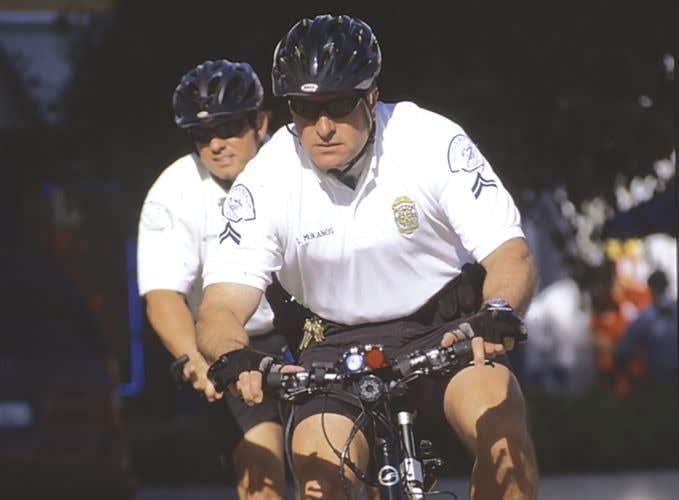But the community as a whole is the real beneficiary of Pasadena’s Bicycle Patrol Program, if for no other reason than it reduces crime. For example, Cissell says, at one particular apartment complex the unit concentrated on, “We were catching burglars—we were catching car burglars, car thieves, and we were making a lot of dope arrests because [criminals] are not looking for a policeman on a bicycle. They’re looking for a policeman in a car. I rolled up on one day shift in broad daylight on six guys stripping a stolen vehicle.”
And the dark of night does nothing to diminish that effectiveness; if anything, Cissell observes, bicycle officers are even more useful at night when it comes to crime-fighting. Like other police vehicles, the bicycles have bright headlights—smaller in scale than those on patrol cars, of course, and easily removable—and red and blue flashing lights, as well as official police graphics and lettering.
In the experience of the Bryan (Ohio) Police Department, its bike patrol unit, formed in 2001, is most effective at night. “Our biggest run time is in the evening hours,” Bryan Patrolman Jeremy Viers notes. “As far as second and third shift, we get a lot of activity.”
When it comes to staffing, smaller towns must often juggle assignments, of course. For its town of 9,000, the Bryan PD generally deploys three patrol officers per shift, although only one is assigned to patrol on bike. “If we have less than three, then we don’t utilize the bike,” Viers says. A small agency, therefore, simply might not have enough manpower to field a bike patrol detail, he feels.
After obtaining grants and other community donations, as well as a small budget from the department, Viers set up Bryan’s bike patrol after consulting other agencies and organizations. “We tried to learn from their mistakes before we bought,” he says. “We went with good equipment, and I’m glad we did.”












